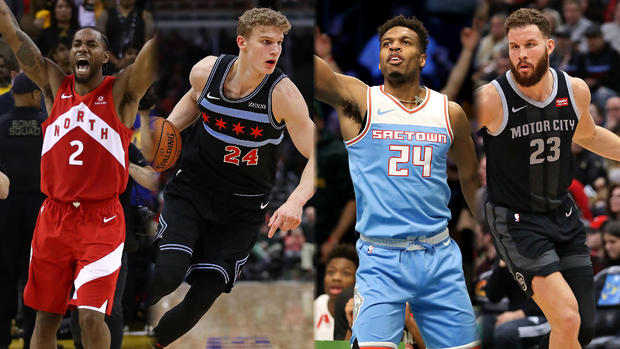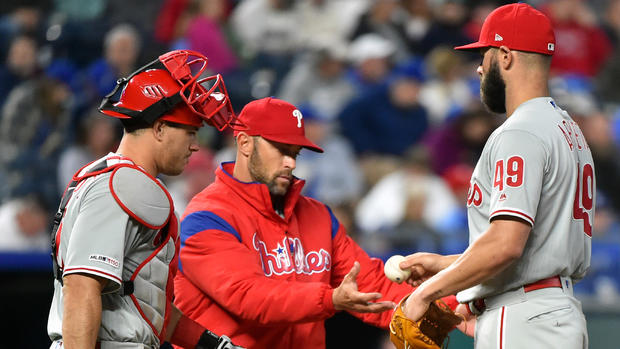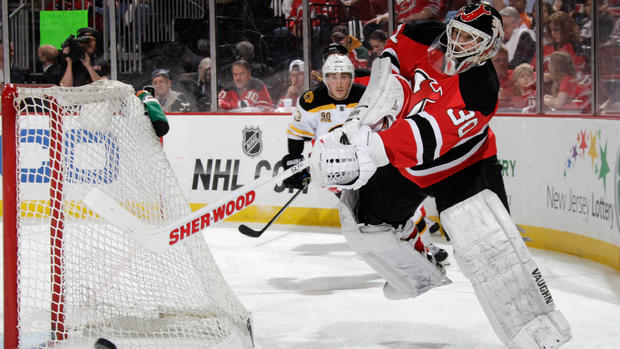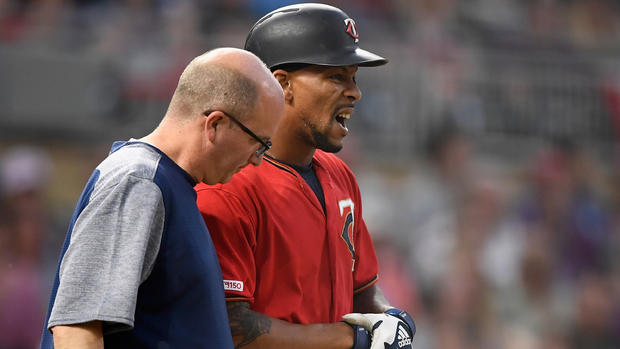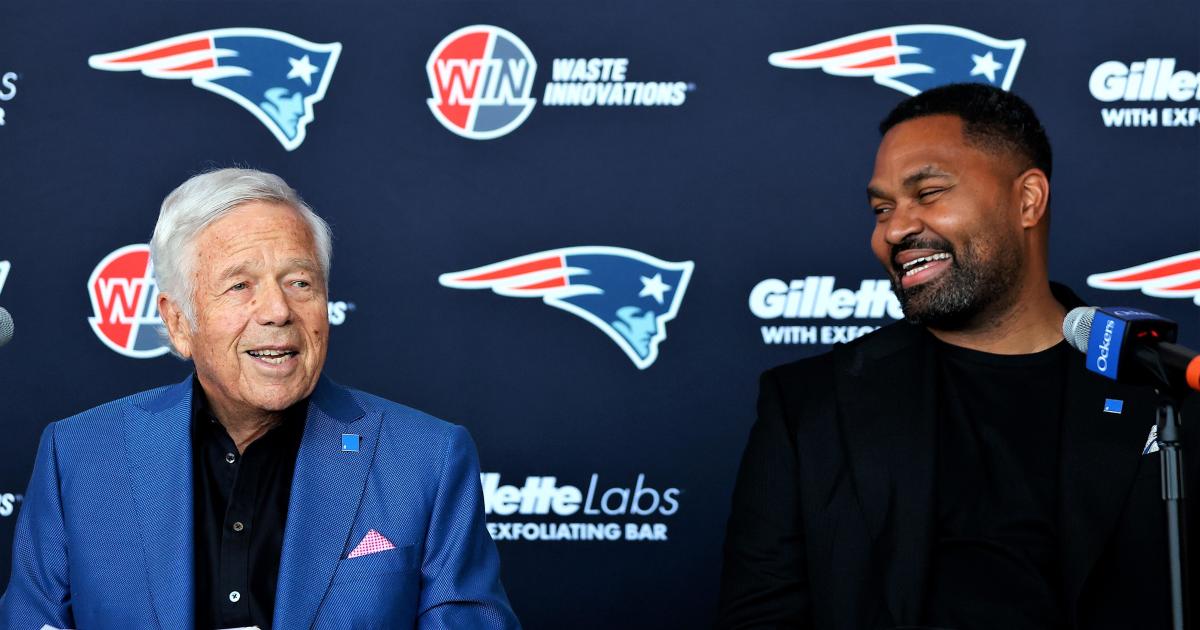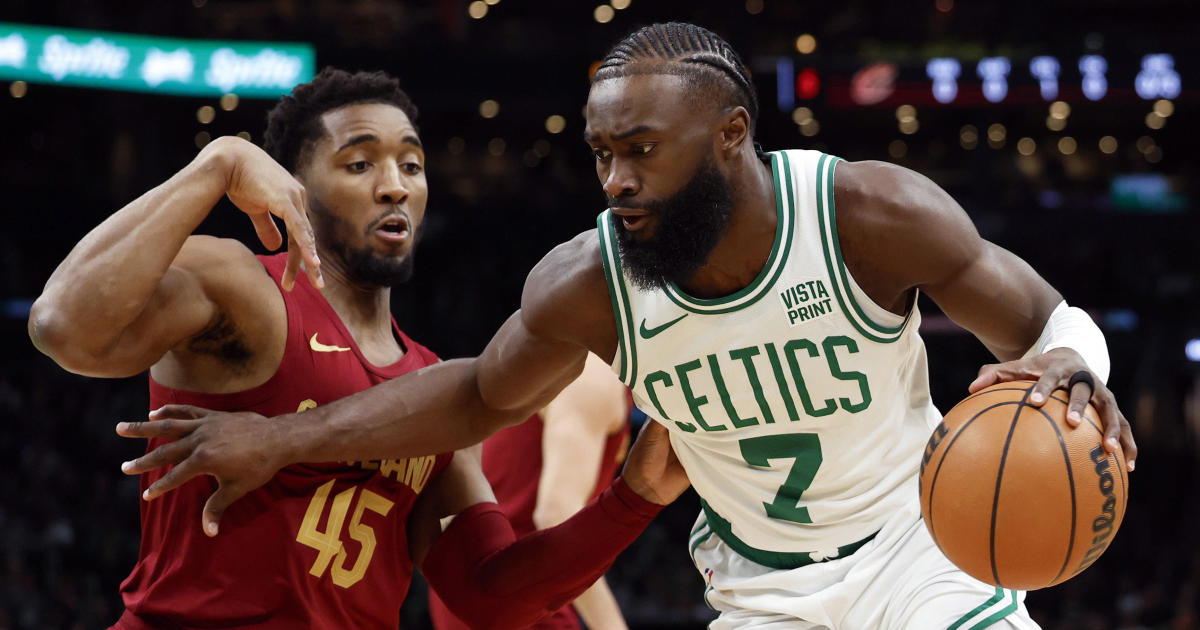Four Very Important Sports Takes For The Fourth Of July
By Michael Hurley, CBS Boston
BOSTON (CBS) -- It's the Fourth of July. Or perhaps July Fourth is your preferred nomenclature. Independence Day, if you want to be all technical about it. ID4, if you're a major motion picture starring Will Smith.
Whatever you might call it, the fact is that the day is so slow in the sports world that a hot dog eating contest is annually the biggest national event we've got going.
A hot dog eating contest.
It's something that literally nobody enjoys watching, and yet ... we've all watched.
Outside of the rapid ingestion of cylindrical meat scraps on TV or the breathless coverage of NBA free agents thinking about stuff, there's not a whole lot going on in the world of sports on this glorious day. So, naturally, it's a good day to drop some very important, super-serious sports takes. These aren't your standard "MJ-is-better-than-LeBron" types of takes, but rather they are ways we must improve sports. Frankly, they should all be implemented immediately, but I don't have that type of power yet. But on this day, which celebrates our independence, perhaps a revolution will be born.
1. There's Just Too Many Different Jerseys In The NBA
Yup. You read that right. The hottest of hot takes. Too many DANG jerseys in the NBA.
Really, the issue is this: When you see a picture of a player in uniform, you should know instantly that player's team. These days though, you could flip on a game on a random Thursday night and not even be sure which team is which anymore.
While there's a legitimate reason to appeal to a younger generation that might always be on the hunt for the newest, hottest design ... there's also something to be said for classic brand recognition -- the type of mark that can endure decades.
2. Starting Pitchers Who Last Less Than 5 Innings Should Be Eligible For A Win
I know, I know, I know. I know what you're thinking. You're sitting there saying, "Mike! God! No! This one's too hot!"
I hear you. At the same time, I am very sorry that I am very not sorry for this spicy feeling. Because it's unmistakably the right take.
I get it. You're the starting pitcher. You're supposed to pitch deep into the game to give your team a chance to win. If you do well, and if your team scores some runs, then you get that delicious-looking W next to your name in the box score. You should have to earn it.
But that's exactly my problem with this rule. Let's say Pitcher A -- we're calling him Bobby McPitcherface -- works through a taxing 4.2 innings, allowing three runs but getting lifted with two outs in the fifth because he needed 109 pitches to get those 14 outs. The manager likes a lefty-left matchup to get out of a two-on, two-out jam, and sure enough it works, and McPitcherface's team maintains a 5-3 lead.
From there, four relievers split up the remaining 4.1 innings, with Stever O'Reliever lasting the longest at 1.2 innings pitched. At the end of a 7-3 win, the official scorer has to name someone the winning pitcher, so he goes with O'Reliever.
Why does O'Reliever get the win for his 1.1 innings of work, while McPitcherface's 4.2 innings of work were by far the most pitching of the night? McPitcherface was also the best pitcher.
Give him the win! Give it to him now!
2a. Closers Should Be Ineligible For Wins If They Blow A Lead Before Their Team Wins In A Walk-Off
While we've got the charcoal FIRED UP, we should probably address this affront to society as well.
When a closer enters the top of the ninth trying to hold a 3-1 lead, and when he coughs up that lead to send the game into the bottom of the ninth tied at 3-3 -- or worse, with the visitors leading 4-3 -- then why OH WHY does that closer get a win if the home team plates the winning run in the bottom of the ninth?
That's stupid. You're stupid, baseball.
Everyone who talks about baseball these days always has to say "well the win stat is supremely flawed but ... ." And, well, it doesn't have to be that way. We can restore some meaning to the win stat, people. It just takes a few simple steps.
3. Kill The NHL's Trapezoid Rule
Fundamentally, any rule named after a geometric shape should be banned. This is sports, not math class, nerds.
Anyway. If you don't know the history of the trapezoid rule, it apparently came into effect because Martin Brodeur was just too good at handling the puck, serving as a de facto third defenseman at times for a team and in a system that certainly did not need any more defenseman. So in an effort to try to limit the puck exiting the defensive zone, the NHL drew a trapezoid in the ice behind the net to serve as a sort of cage for goalies. No more were they free to skate to the corner to try to make a play on the loose puck. (Unfortunately for Ryan Miller, the league didn't think to put a trapezoid in front of the net.)
Look at this monster, by the way:
Now, I can't present any data that states that goal scoring would stay the same or go up if the trapezoid rule were taken off the books, but I can guarantee you that the NHL never presented any data back in 2005 that the institution of this rule would make any changes. For every skilled puck handler like Brodeur, there's always been a pack of five goalies who mishandle pucks and give up scoring chances that otherwise wouldn't have existed.
The only tangible result this rule has brought is that we now see goalies try their darnedest to avoid touching that puck as it floats around the edge of the trapezoid, like a high stakes game of Hot Potato, to avoid picking up a minor penalty. It is by far the softest, silliest penalty on the books in any professional sport, and frankly we should all be embarrassed for letting it go on for as long as it has.
It also cuts down on goalies scoring goals, I bet. And why would you ever want to cut into goalies scoring 200-foot, empty-net goals? Why? Why would you? You wouldn't. Would you? No, you wouldn't.
4. Injured Baseball Players Should Get 10-15 Minutes Of Ice Time
At the risk of being labeled as a soft millennial, I've got a rather radical change to propose to the game of baseball. Please hear me out.
You've seen this a thousand times. A player gets hurt, often by taking a 97 mph fastball to the wrist or back or arm or head or face or ribs or knee or ankle or whatever. Sometimes the damage is done by a foul. This hurts, you know. That player, though, acts like it doesn't hurt that bad, fending off the trainer and the manager and very masculine-like telling them in a very deep voice, "I'm fine. I'm staying in. Please hand me some more beef jerky and cigarettes."
And what happens, say, eight minutes later when the inning ends? That player leaves the game, either after being unable to run the bases effectively or upon realizing that the point of contact has ballooned and requires some medical attention. A substitute is made, and that player's day is over.
I recognize that this is the way baseball has been for 11,000 years, when the cavemen invented it. I recognize that the big tough strong ball players of the 1930s wouldn't need any special rules regarding injuries, because injuries are imaginary and whatnot.
But ... it's 2019. Every pitcher throws 300 mph. Getting hit by a baseball does some damage.
So what if ... instead of delaying the game for seven minutes to let a trainer gently hold the shoulder of a downed player, we just let that player head to the clubhouse, get some ice on the injury site to prevent swelling from getting out of control, and letting a substitute play the game for, say, 10 minutes? If the injured player is able to return to the game after icing that injury down after the 10 minutes, he can get his spot back. If he can't, then the replacement stays.
Wow, seeing it written out, that is objectively a great idea. We're all worried about pace of play, and hey, this seems to remove some of those stretches of inactivity.
Thanks for the great ideas, Mike, you truly are a sports sage and we all respect you to the point of true admiration, you may be saying. To that, I'd just reply, simply, you're welcome. Now go and enjoy your independence.
You can email Michael Hurley or find him on Twitter @michaelFhurley.

